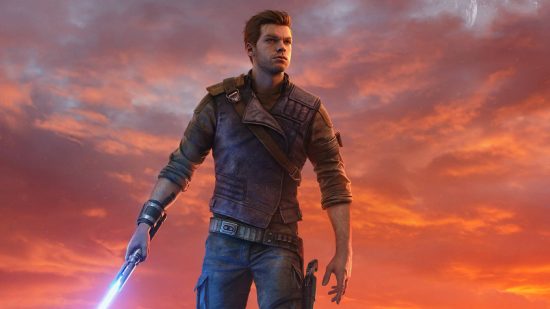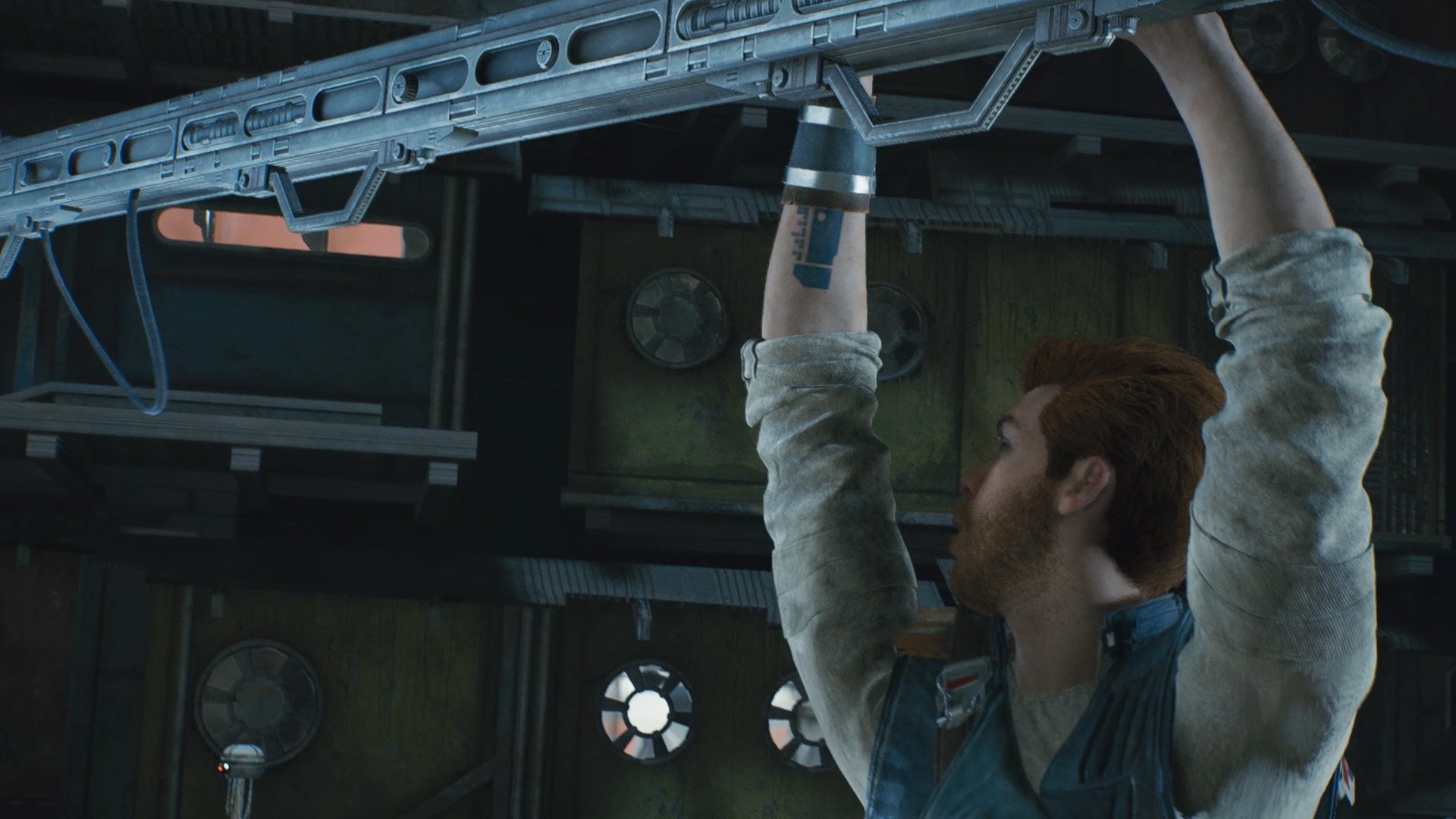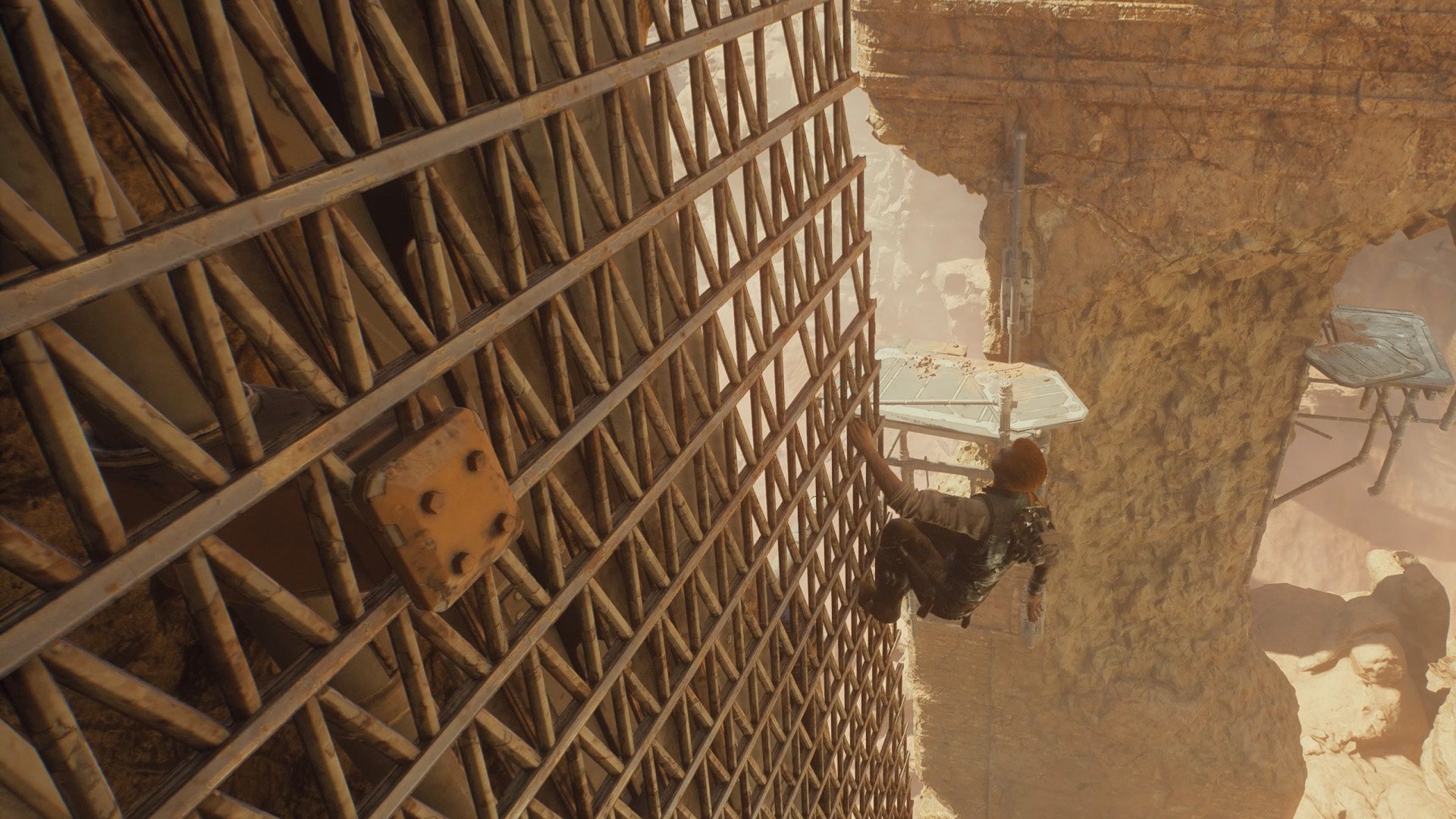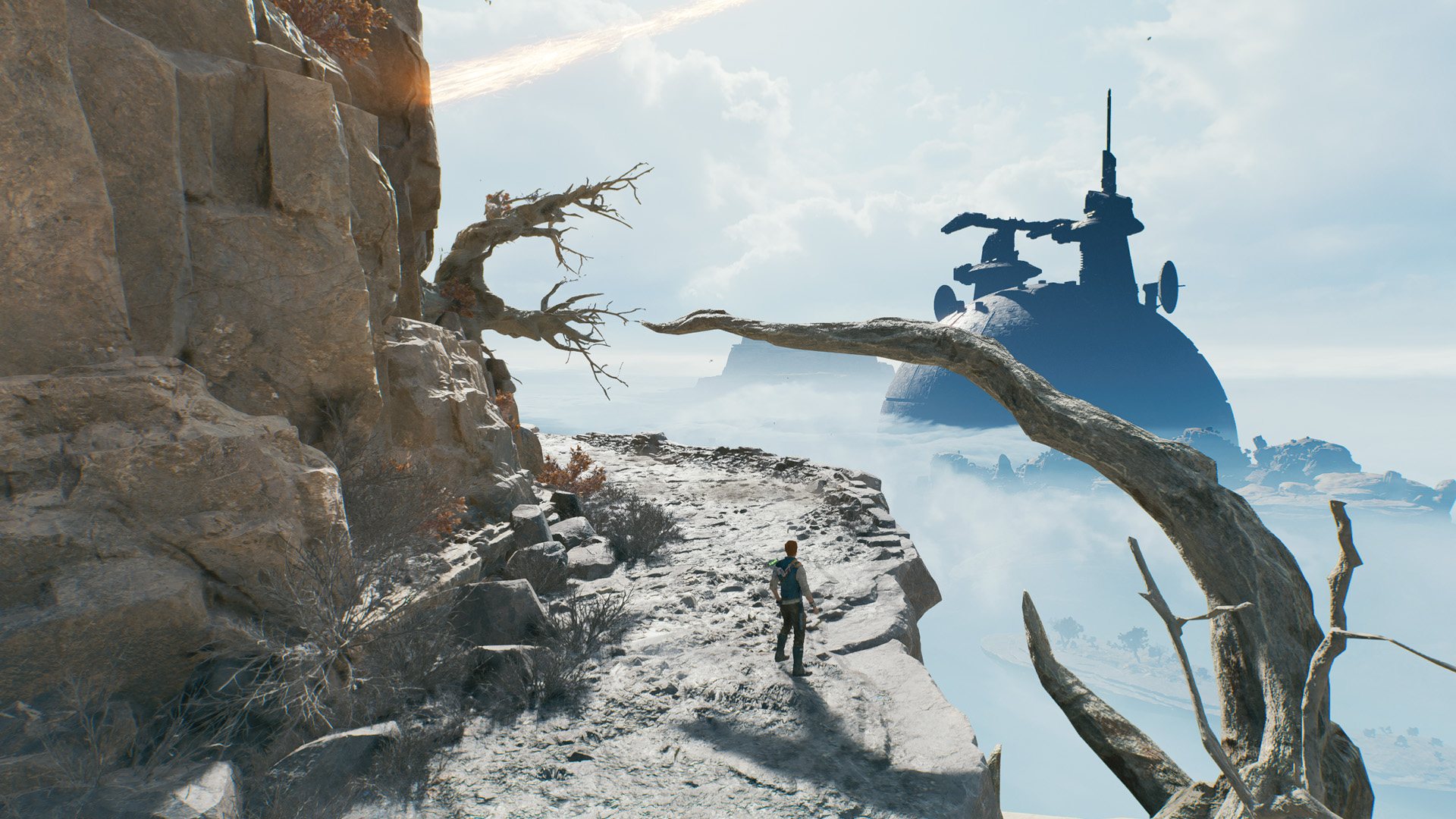I was hopeful when I first booted up Respawn’s Star Wars Jedi Survivor. Four years after Fallen Order’s release, the games industry has made incredible strides in gaming accessibility, progressing far beyond the most basic expectations, such as subtitles and toggle settings.
Respawn’s parent company, EA, is a proactive contributor to this progress, having shared its patented accessibility-centered technology for others to use free of charge. I’m even Twitter mutuals with incredible EA developers who are constantly pushing boundaries to include more disabled gamers in their playerbase than ever before.
But within Survivor’s first hour, my hopes were dashed. Seeking a way to reach his crew on Coruscant, Cal Kestis discovers an Ascension Cable in a pile of scrap – a fancy Star Wars term for a grappling hook. It’s a fun tool that grants Cal’s acrobatic platforming some additional fluidity, zipping him from point to point.
Then he had to grapple and run across walls.
To the average non-disabled person, this might not be a big deal, unless said combos are unreasonably complex. In this case, the combo requires you to jump near enough to a grappling point and then leap onto a specific section of a wall: two taps on the spacebar, then one tap on E while holding W, all while moving the camera with the mouse. Sounds simple, right? Not to someone with a neuromuscular disability like myself, who struggles with control over my dexterity and strength.
The issue worsens as you and Cal trek through Survivor. About halfway through the game, Cal acquires the ability to dash midair, bound by default to the Tab key. Pretty soon, platforming requires you to dash, use the Ascension Cable, and double jump all at once. Beyond that, there are platform pieces you have to move through the Force or BD-1, some of which slide back to their original position within seconds. Cal can also sink into tar pits if you don’t reach the safety of a nearby platform quickly enough, and there’s a scorpion-like alien out to kill him the moment he sets foot on the dunes of the planet Jedha.
Everywhere I turned, Survivor seemed inherently inaccessible for people with mobility disabilities. Though Respawn and EA are committed to making accessible games, as evident in the number of accessibility settings offered in Survivor, the demands of its platforming design tarnishes these efforts. It’s great that I can remap commands to be closer to me and that I’ll have extra time to execute combos thanks to Slow Mode, but I’m still easily exhausted from the number of combos I have to execute.
As frustrating as it was to push through my fatigue and finish the game, I am most upset that it is completely inaccessible to my best friend, who’s a massive Star Wars nerd. She shares my disability but is further along in her disease than I am, meaning the majority of RPG games are inaccessible to her. We hoped she could play it after we discovered a workaround through Windowed Mode, which made the onscreen keyboard compatible with Survivor, allowing her to play with her mouse as a single input. Alas, that was not the case.
With the amount of accessibility research Respawn has done and the breadth of its support for blind and deaf players, it’s bewildering to see Survivor’s platforming system break a fundamental rule in accessible game design: to ensure level design is as inherently accessible as possible, even without accessibility settings.
Survivor didn’t have to be inaccessible to fulfill the vision of Cal’s progress as a Jedi and rebel fighter. But if Respawn couldn’t commit to vetting its level design for accessibility, there were still ways the studio could have alleviated the required physical strain.
One option would be to nix the timed elements of Survivor’s platforming sections or eliminate the need to hit the spacebar and hold WASD to leap from one trellis to the next (akin to Horizon Zero Dawn’s system). I’d also have appreciated a setting for BD-1’s Electro Dart to automatically snap to the electrical cylinders in charge of certain movable platform pieces. Another option would be Force abilities or traversal upgrades that make platforming easier instead of progressively harder, such as a way to adhere to walls for a time while wall-running.
Despite my disappointment in Survivor’s inaccessibility, I am trying to stay open to the possibility that the third installment in Respawn’s Jedi series will be accessible for people with mobility disabilities. And not just for us either – on launch day, my girlfriend, who’s a non-disabled gamer, sent me a text saying she’d cast Cal hurtling to his death multiple times while platforming. It was a good reminder that inherently accessible games benefit everyone, even those who might not seem like they need the accessibility.
Be sure to check out our Star Wars Jedi Survivor review for our full thoughts on Respawn’s latest. We’ve also got a list of all the Star Wars Jedi Survivor Lightsaber colors you can unlock during your space game adventure.



